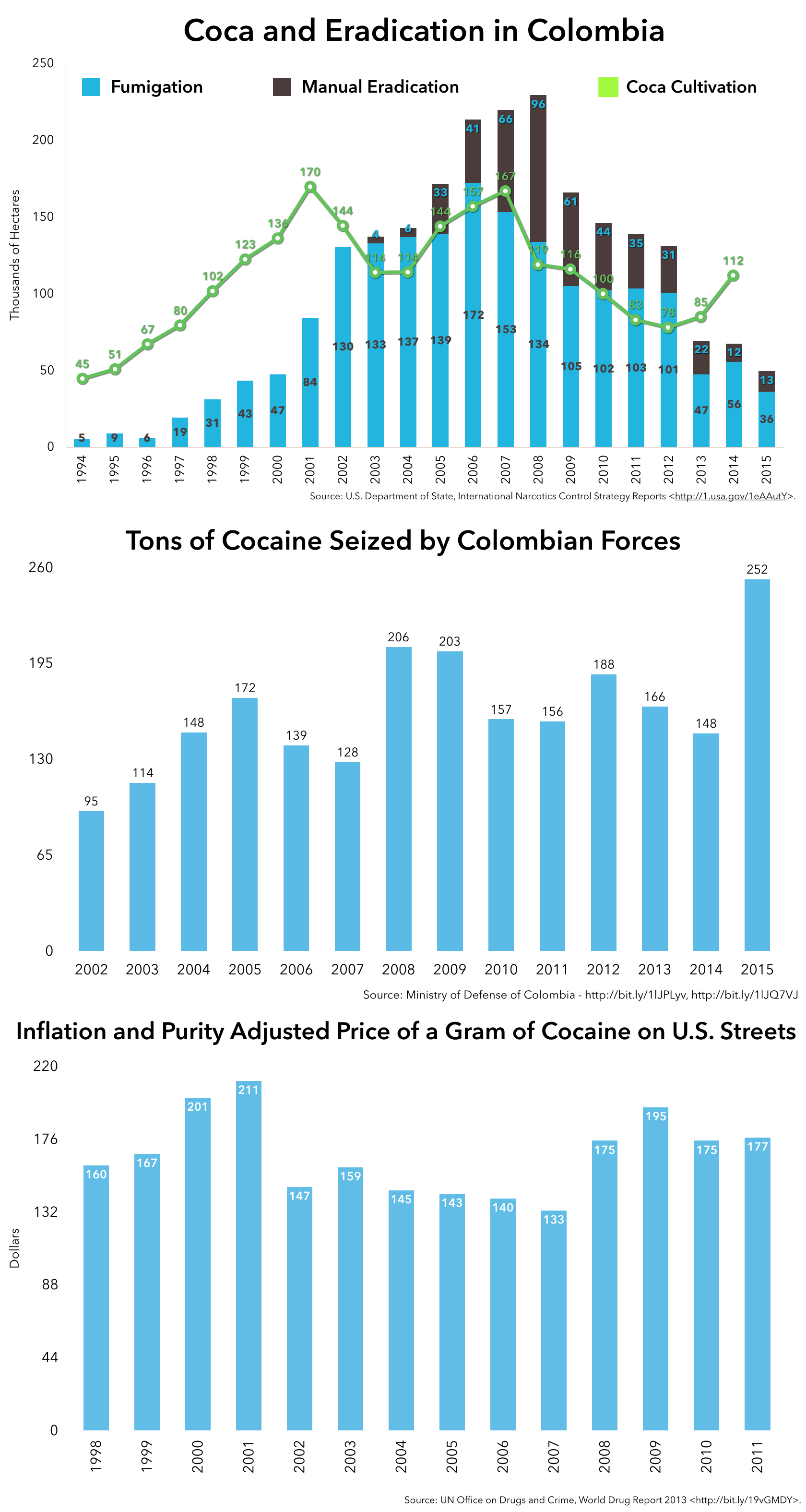Drug Policy Remains Vexing
"Plan Colombia” paid for crop-eradication operations in which aircraft sprayed herbicides over 1,678,000 hectares (4.15 million acres) of territory where farmers grow coca, the plant used to make cocaine. The strategy didn’t work. The curve of coca cultivation since Plan Colombia began (the green line in the chart below) forms sort of a “W” shape. Plan Colombia’s initial barrage of herbicide fumigation caused coca-growing to plummet. Growers adapted to the spraying, though, and by 2007 the country’s coca crop had recovered. A greater reliance on manual eradication brought cultivation down again, but this proved dangerous and expensive when carried out in a vacuum of state presence. (A fuller discussion of these trends appears in an April 2015 WOLA memo.)
By 2013, all forms of eradication were down, but had not been replaced by a significant effort to deliver government services in coca-growing zones. Statistics for 2014 showed a sharp increase in coca cultivation; while 2015 data won’t be available until mid-year, Colombian authorities seized a record amount of cocaine last year, indicating robust production. In November, Assistant U.S. Secretary of State for International Narcotics and Law Enforcement Affairs William Brownfield said that U.S. citizens’ use of cocaine began to increase again “in the last couple of years,” according to new data, after about a decade of declining demand.
(Text continues below the charts)

In early 2015 the World Health Organization’s International Agency for Research on Cancer determined that glyphosate, the herbicide used to eradicate coca, is “probably carcinogenic to humans.” As a result, Colombia’s government halted the spray program in October 2015. It now plans increased manual eradication and, after a peace accord is signed, an ambitious plan of assistance to coca-growing communities in exchange for voluntary eradication. Success in addressing the vexing drug production phenomenon will require Colombia to establish and maintain a real and effective state presence, often for the first time, in vast ungoverned rural areas.
 15
15